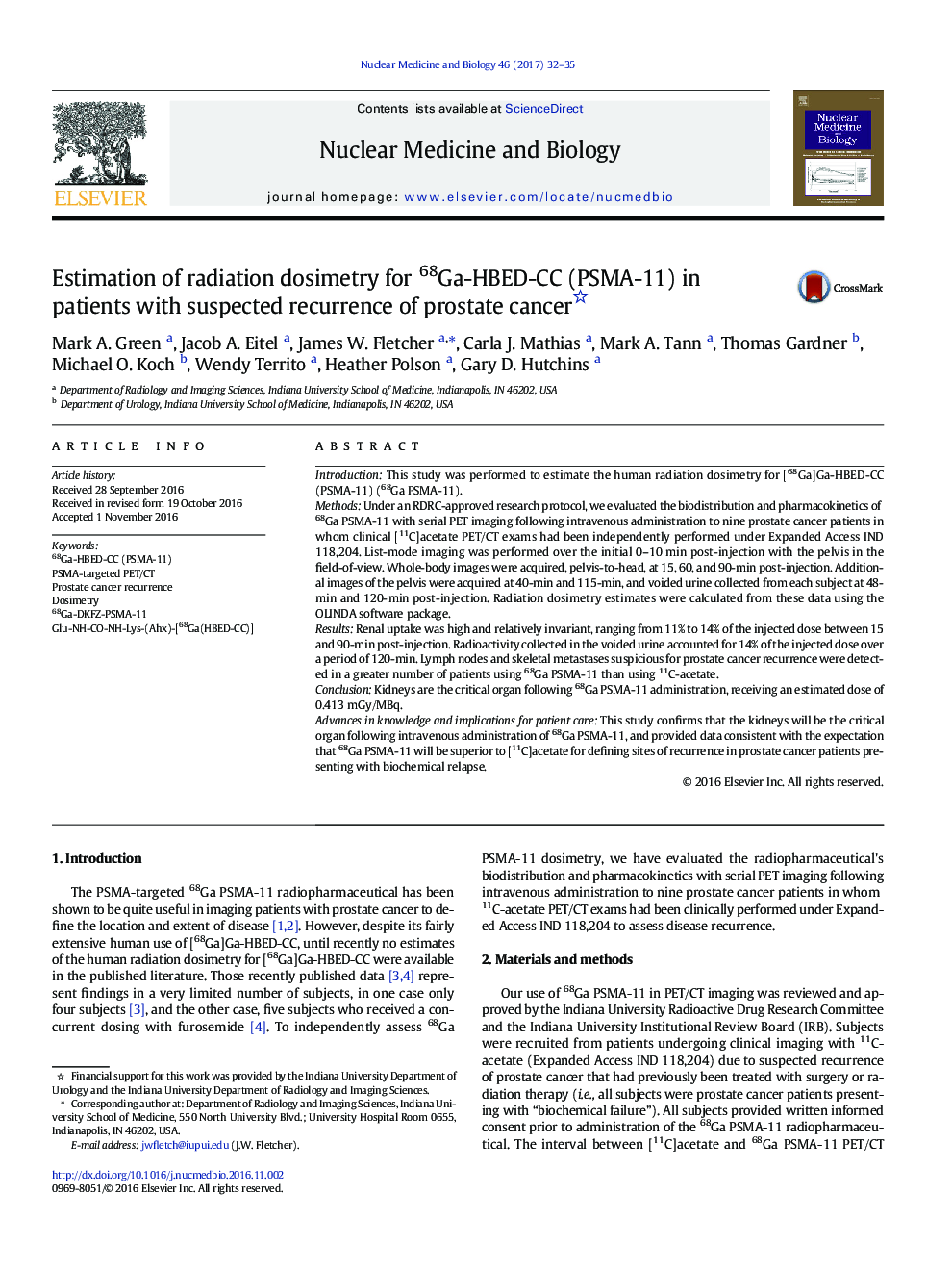| Article ID | Journal | Published Year | Pages | File Type |
|---|---|---|---|---|
| 5529012 | Nuclear Medicine and Biology | 2017 | 4 Pages |
IntroductionThis study was performed to estimate the human radiation dosimetry for [68Ga]Ga-HBED-CC (PSMA-11) (68Ga PSMA-11).MethodsUnder an RDRC-approved research protocol, we evaluated the biodistribution and pharmacokinetics of 68Ga PSMA-11 with serial PET imaging following intravenous administration to nine prostate cancer patients in whom clinical [11C]acetate PET/CT exams had been independently performed under Expanded Access IND 118,204. List-mode imaging was performed over the initial 0-10Â min post-injection with the pelvis in the field-of-view. Whole-body images were acquired, pelvis-to-head, at 15, 60, and 90-min post-injection. Additional images of the pelvis were acquired at 40-min and 115-min, and voided urine collected from each subject at 48-min and 120-min post-injection. Radiation dosimetry estimates were calculated from these data using the OLINDA software package.ResultsRenal uptake was high and relatively invariant, ranging from 11% to 14% of the injected dose between 15 and 90-min post-injection. Radioactivity collected in the voided urine accounted for 14% of the injected dose over a period of 120-min. Lymph nodes and skeletal metastases suspicious for prostate cancer recurrence were detected in a greater number of patients using 68Ga PSMA-11 than using 11C-acetate.ConclusionKidneys are the critical organ following 68Ga PSMA-11 administration, receiving an estimated dose of 0.413Â mGy/MBq.Advances in knowledge and implications for patient careThis study confirms that the kidneys will be the critical organ following intravenous administration of 68Ga PSMA-11, and provided data consistent with the expectation that 68Ga PSMA-11 will be superior to [11C]acetate for defining sites of recurrence in prostate cancer patients presenting with biochemical relapse.
